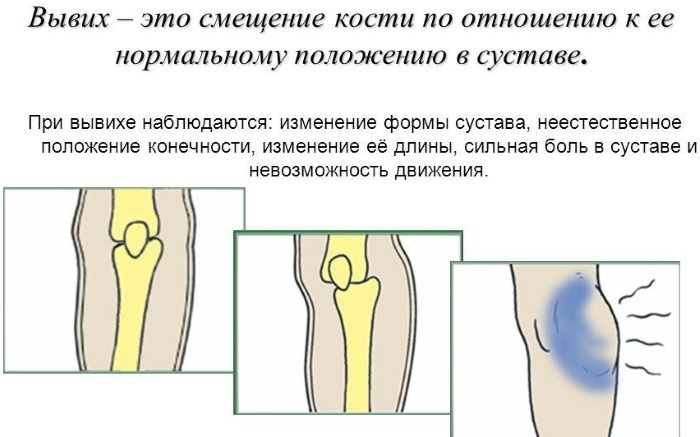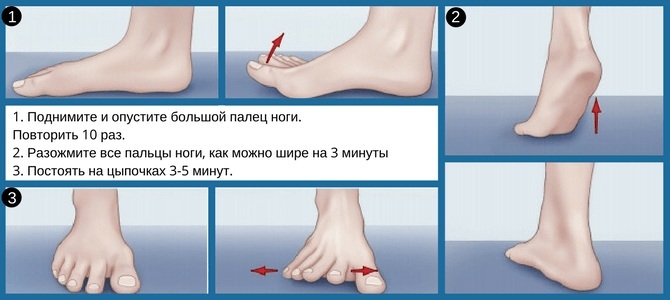Injuries to the musculoskeletal system more often occur in people who lead a sports lifestyle or at least once had an accident. Less often, an injury occurs after an unsuccessful movement or as a result of an accident, against the background of a certain disease.
Treatment is carried out using complex methods, the main goal of which is to restore the functioning and mobility of the affected area of the body. It is impossible to establish a diagnosis on your own and it is categorically impossible to take medications. It is important that the treatment is selected by a traumatologist.
Record content:
- 1 What are the reasons for injuries of the musculoskeletal system?
- 2 Types of injuries
- 3 Injury classification and symptoms
- 4 First aid for spinal injuries
- 5 First aid for other injuries
-
6 Treatment activities
- 6.1 Drug treatment
- 6.2 Surgery
- 6.3 Rehabilitation treatment
- 7 Consequences of musculoskeletal injuries
- 8 Video about injuries of the musculoskeletal system
What are the reasons for injuries of the musculoskeletal system?
Damage to the musculoskeletal system often occurs as a result of a strong impact of external destructive forces. We are talking about sprains, bruises, fractures.
There are numerous provoking factors:
- excessive stress on a certain segment of the musculoskeletal system;
- deficiency of vitamins and minerals in the human body as a result of the development of a certain disease;
- heavy loads or constant overvoltage;
- lack or improper use of special protection during sports activities.
Accidents also lead to numerous injuries to the musculoskeletal system. In any situation, characteristic clinical symptoms appear, with which you should immediately go to the hospital.
Traumatologist is engaged in diagnostics and treatment. The specialist will conduct an examination, prescribe an additional examination, if necessary, and select the most effective therapy, taking into account the test results.
Types of injuries
In medicine, the following types of damage to the musculoskeletal system are distinguished: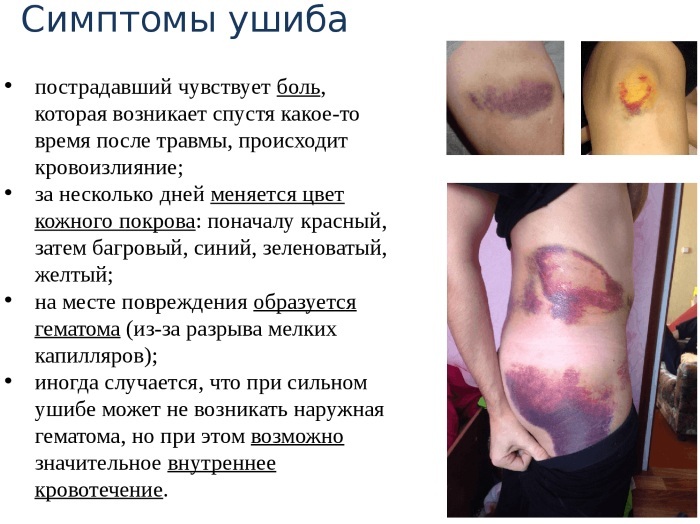
| Name | Description |
| Minor injury | Bruises, sprains are treated on an outpatient basis. Injuries often appear as a result of a fall, after strong physical exertion on the joints, when the lower extremities are tucked. They are accompanied by soft tissue edema, mild pain syndrome, which disappears at rest. |
| Medium severity | These are dislocations, fractures, ruptures of tendons, ligaments, muscles and damage to the cartilaginous joint. A person gets injured as a result of an unsuccessful fall or after heavy exertion. Depending on the injury, treatment is carried out at home or in a hospital. The victims complain of severe pain, swelling of soft tissues, limitation of the mobility of the injured limb. |
| Severe trauma | This is a fracture of the spine, skull bones, ribs. The same goes for intracranial injuries. Such severe injuries are life-threatening. The main reason is a traffic accident, a fall from a high height. The patient needs urgent medical attention. |
Musculoskeletal injuries are not as dangerous to human life as other diseases. But without timely medical assistance, any damage can lead to serious consequences, including death.
Injury classification and symptoms
Trauma to the musculoskeletal system entails anatomical and functional disorders in the tissues and organs of the human body. Numerous factors are the cause, including adverse environmental influences, impacts, falls. In medicine, there is a certain classification of injuries of the musculoskeletal system:
| Name | Description |
| Stretching | A pathological condition in which there is a high risk of ligament rupture. Trauma is the result of a sharp movement of the joint, the size and strength of which is much higher than its physiological characteristics. The victim develops the following clinical symptoms:
|
| Injury | Trauma to the musculoskeletal system, in which tissues are damaged without violating the integrity of their structure. A fall or bump is a common cause. Symptoms of a severe bruise are the following:
|
| Fracture | The integrity of the bone is impaired. Injury results from physical force that exceeds the strength of the injured part of the body. A fracture also threatens patients who have been diagnosed with a disease that negatively affects the state of the bones, washing out the necessary minerals from the body. The pathological condition is characterized by the following clinical symptoms:
|
| Dislocation | A pathological condition occurs as a result of a strong mechanical effect when one of the elements of the joint is displaced. Dislocation can also be provoked by destructive processes, for example, with arthrosis or indirect injuries of the musculoskeletal system (dislocation of the shoulder after an unsuccessful fall). The victim develops the following clinical signs:
Complete dislocation is characterized by the absence of contact between the articular parts. Subluxation provides for their partial contact. |
| Crash Syndrome | A pathologically serious condition that appears as a result of prolonged squeezing of the human body or a separate part of it. General disorders develop in the victim's body. Crash syndrome is more often the result of an accident, bombing or natural disaster. A person falls into a state of shock, his body is poisoned by the decay products of its own tissues. Crash syndrome is accompanied by the following clinical symptoms:
The lack of ambulance in such a situation provokes the death of a person in 1-2 days. |
| Multiple damage | In most cases, numerous injuries of the musculoskeletal system provoke the death of the victim, both at the scene of the accident and upon admission to a medical institution. A person receives multiple injuries as a result of an object falling on him that exceeds the size of the body or during its rapid movement. After such an injury, there is a high probability of serious fractures. Sharp parts of bones can damage internal organs, causing severe bleeding. Clinical symptoms are very different and depend on the area of damage. Upon arrival, the ambulance doctor checks for dangerous signs, including shock, respiratory failure, or the presence of severe bleeding. |
In any situation, the victim will need first aid and the attention of a traumatologist. The specialist will conduct an examination, prescribe an additional comprehensive examination and, based on the information received, select the most effective method of therapy.
First aid for spinal injuries
Injuries of the musculoskeletal system necessarily require the attention of a qualified traumatologist. But before the ambulance arrives, it is important to provide the victim with the correct assistance. His life will depend on these actions, especially the spine. Its damage also belongs to the category of injuries of the musculoskeletal system.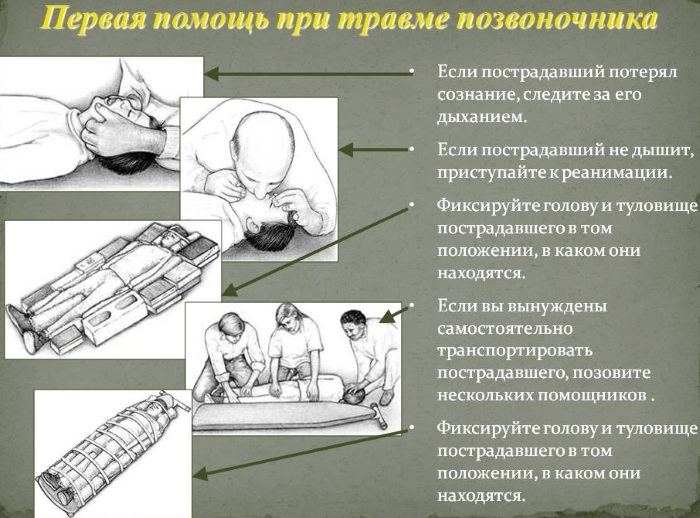
First aid involves the following:
- You must immediately call a doctor.
- Before the arrival of an ambulance, you must not move the victim, especially if there is a suspicion of damage to the neck, head, spinal cord.
- Give the person pain relievers to prevent traumatic shock.
- If the victim is unconscious, it is necessary to lay him on his side, facing forward, in order to prevent the retraction of the tongue. The same should be done if vomiting occurs.
- If necessary, you should fix your head using any available means (pillow, towel, stick).
- Protective equipment (helmet, hard hat) must not be removed before an ambulance arrives.
- Fresh air must be provided.
- In the absence of breathing, perform chest compressions and mechanical ventilation.
- If there is bleeding, it must be stopped. Apply a bandage, cover with a cloth, or press firmly against an open wound with your hands.
Any person who is nearby can help the victim. It is important to immediately call a doctor and not move the person, since any movement can be fatal for him.
First aid for other injuries
First aid is important after injury, the speed of its provision depends on the future treatment and rehabilitation of the victim.
Before the ambulance arrives, you must do the following:
- Eliminate the traumatic factor.
- Give the victim pain relievers to prevent trauma shock.
- Apply a cold compress. It will help reduce pain and soft tissue swelling.
- It is necessary to immobilize the damaged area of the body. For this, any material at hand (bandage, scarf, bandage) or a special medical splint is used. Immobilization is necessary to prevent the displacement of broken bones or to reduce the load on muscles and joints.
- If bleeding occurs, a tourniquet must be applied above the open wound.
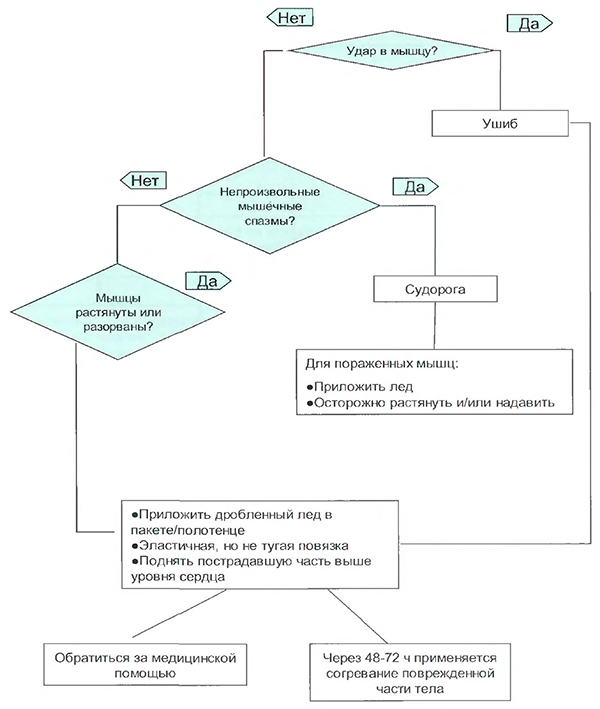
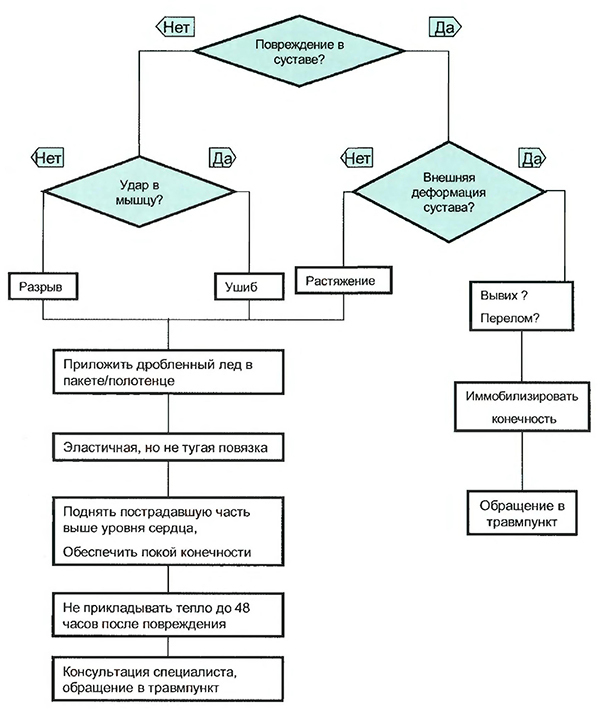
Diagnostics and first aid for joint damage - trauma of the musculoskeletal system
Correctly and quickly provided first aid will allow the patient to recover sooner and return to normal life. In case of a fracture of the lower limbs and spine, the victim is transported in a supine position. Damage to the hands involves the transportation of the patient while sitting. Therapy is carried out in a trauma center or inpatient department, taking into account the injuries sustained by a person.
Treatment activities
Injuries of the musculoskeletal system involve the use of complex therapeutic methods. The victim is prescribed medications to reduce inflammation, pain, and repair damaged tissue.
In difficult situations, surgery is performed. After treatment, the patient is advised to undergo a full course of rehabilitation to restore the functioning and mobility of the affected area of the body.
Drug treatment
The drugs are selected by the traumatologist after a complete examination of the patient, taking into account the source of the musculoskeletal system injury, the degree of damage and the individual characteristics of the body. It is important to strictly adhere to all the prescriptions of a specialist, since many medications provoke the occurrence of side effects.
| Drug group | Name | Application |
| Pain relievers | Nurofen, Ketonal | Medicines not only relieve pain, but also reduce inflammation. The drug is taken orally 1 capsule (200 mg) 3-4 times a day. The medicine is not chewed, washed down with a sufficient amount of water. The course of therapy lasts 2-3 days. The time interval between doses is 6-8 hours. |
| Warming ointments | Fastum, Finalgon | Medications quickly reduce inflammation, pain, and swelling. The gel is applied to the affected area of the body in a small amount of 3-5 cm 1-2 times a day. Rub in with light massage movements. The course of therapy lasts 14 days. |
| Preparations for the restoration of blood circulation | Troxerutin | The capsules are swallowed whole with plenty of water. The medicine is taken with meals, 1 tablet 3 times a day. The course of treatment in each case is compiled individually by the doctor and lasts 3-4 weeks on average. |
It is not recommended to take medications on your own, since you can provoke a worsening of the condition. It is important that the injured person is examined by a traumatologist, if necessary, prescribe additional diagnostics and establish an accurate diagnosis. After a comprehensive examination, the patient is selected the most effective method of therapy.
Surgery
Surgical intervention is indicated in emergency situations, when the victim has an open fracture or serious injuries that medications will not help to cope with. Surgical treatment is also carried out when there is a threat of violation of the integrity of blood vessels, nerve endings.
In case of injuries of the musculoskeletal system, the victims are prescribed the following types of operations, taking into account the damage:
| Name | Description |
| Bone grafting | Surgical intervention is indicated in case of crushing of the bone structure. The fragments are removed, and an implant is placed in their place, which allows you to restore the volume of the bone. |
| Osteosynthesis | During the operation, the surgeon fixes the bone fragments in the correct position using special supporting structures. |
| Endoprosthetics | An operation during which an endoprosthesis is installed. Artificial elements replace damaged parts of the musculoskeletal system, which have lost their functional ability as a result of strong mechanical or pathological impact. |
After surgery, the patient will have a long recovery and rehabilitation period, during which it is recommended to strictly follow all the doctor's prescriptions. Otherwise, there is a risk of serious complications.
Rehabilitation treatment
After treatment of a musculoskeletal injury, patients are advised to undergo a full course of rehabilitation. Physical therapy and massage procedures will help you recover faster, activate blood circulation in the damaged area and regeneration processes.
Rehabilitation methods after trauma of the musculoskeletal system:
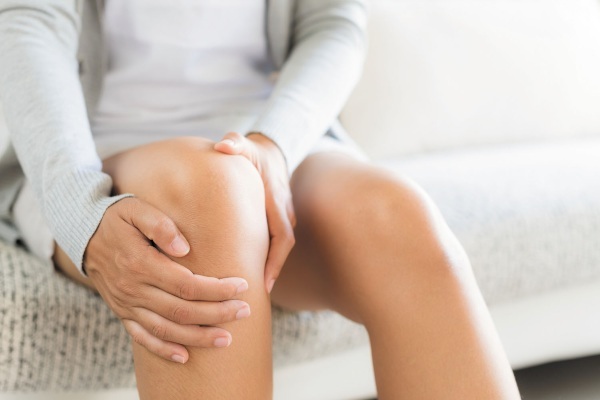
| Name | Description |
| Physiotherapy | A special set of exercises helps to develop joints, muscles, ligaments after prolonged immobilization of the damaged area of the body. Classes are recommended to be carried out slowly, with minimal stress and under the supervision of an instructor. Gradually, the intensity and duration of the exercise increases. The instructor's attention is necessary so as not to overdo it at home, since serious complications can be provoked. |
| Physiotherapy procedures | Medicinal electrophoresis, laser therapy, phonophoresis, magnetic therapy, hydrotherapy, paraffin applications. All procedures can be used in combination or separately. The doctor selects the most effective methods, taking into account the patient's condition and the individual characteristics of his body. |
| Massage | The point effect helps with various injuries of the musculoskeletal system. After each session, the work of the circulatory system improves, material exchange is activated. The massage promotes the regeneration of damaged tissues. It is better to consult a specialist, you should not perform massage on your own, since you can aggravate your health. |
| Salt and mineral baths | Sea salt, which is recommended to be added to hot water, has a positive effect on bone and cartilage tissue, promoting its union. Salt and mineral baths also restore the motor functions of the injured limbs. |
Rehabilitation methods after a musculoskeletal injury should be used if there are no painful sensations and post-traumatic shock, fractures have completely healed and the patient's condition stabilized.
Consequences of musculoskeletal injuries
In most cases, musculoskeletal injuries can be successfully treated. There are situations when a patient has serious complications, more often with damage to the spine, hip structures. Weakened or elderly people are at risk.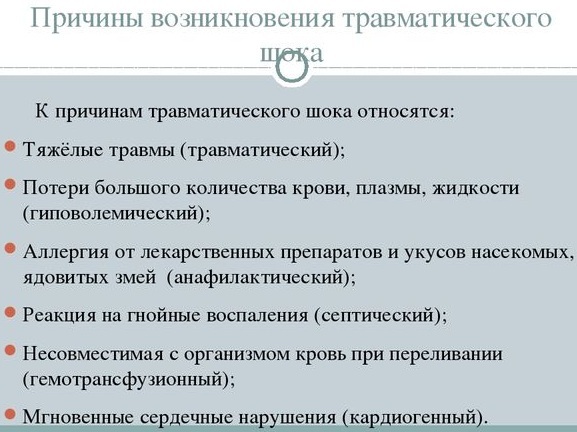
| Name | Description |
| Hemarthrosis | The disease is characterized by hemorrhage into the joint cavity. The cause is severe bruises and intra-articular injuries. |
| Traumatic shock | A severe reaction of the body to tissue damage, bleeding, or bone fracture. The pathological condition is characterized by a deterioration in the functioning of internal organs and systems. Impaired blood circulation leads to the development of tissue hypoxia. |
| Impaired range of motion | The pathological condition occurs after the rupture of the ligament due to its shortening. |
| Secondary infection | With a bone fracture, the integrity of the skin and blood vessels is disrupted. There is a high likelihood of pathogens entering the circulatory system and the development of an infectious disease, sepsis. |
It happens that even timely therapy of a musculoskeletal injury does not help to avoid the consequences. Dislocations lead to severe tears of the ligaments. A severe injury is a vertebral compression fracture, which increases the risk of negative effects on the spinal cord.
Damage to the musculoskeletal system rarely threatens a person's life, more often injuries are completely healed, a person recovers and returns to his usual life. But there are situations when unpleasant consequences appear that cause discomfort and aggravate the state of health.
It is important to always remember about the prevention of injury, it is enough to avoid provoking factors and in case of damage, immediately go to the hospital.
Video about injuries of the musculoskeletal system
Concepts of injuries of the musculoskeletal system:


